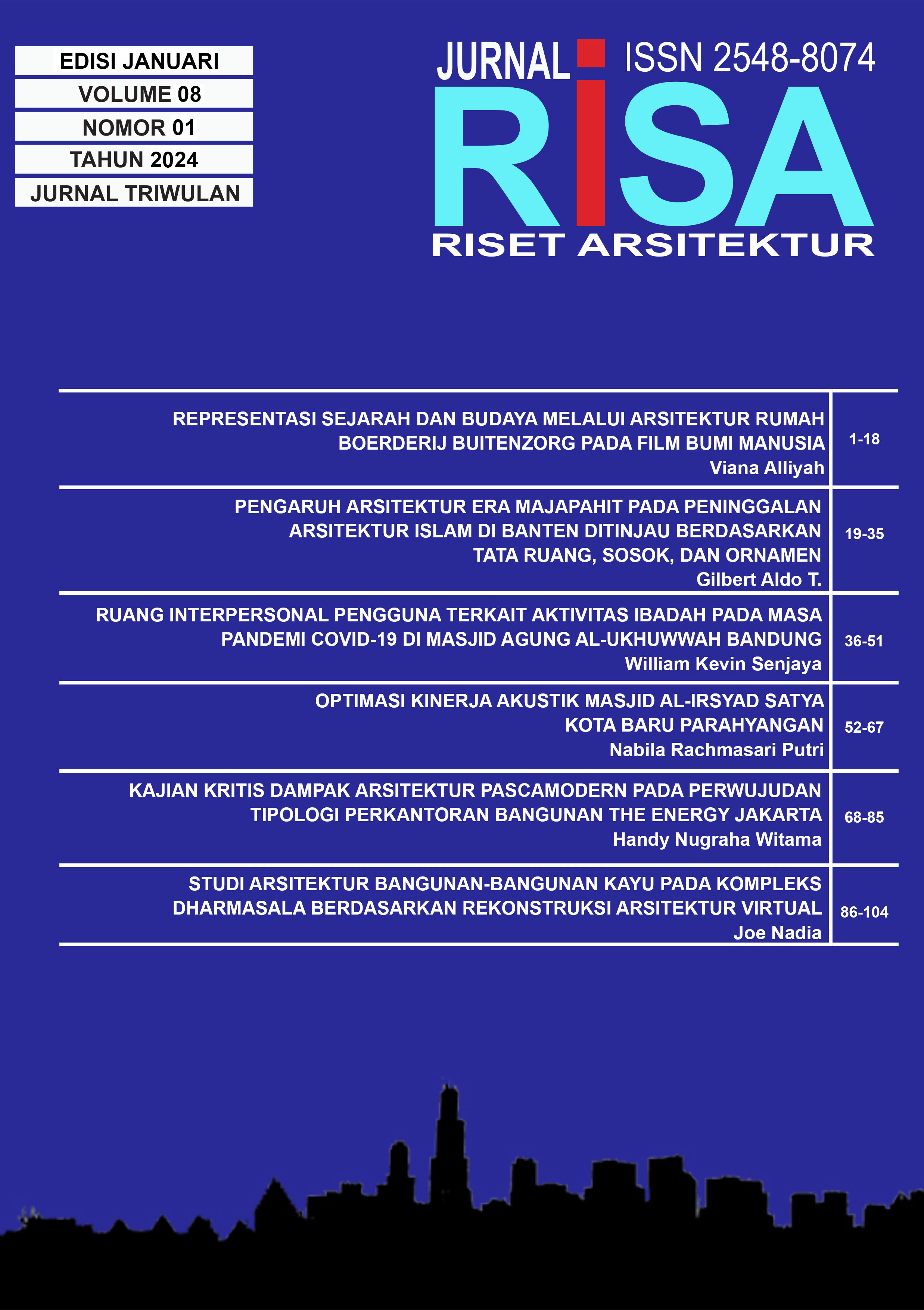USER INTERPERSONAL SPACE RELATED TO WORSHIP ACTIVITIES DURING THE COVID-19 PANDEMIC AT AL-UKHUWWAH GRAND MOSQUE BANDUNG
DOI:
https://doi.org/10.26593/risa.v8i01.7536.36-51Abstract
Abstract - The mosque is an architectural space that is essential, to accommodate various kinds of worship activities for Muslims. This worship activity refers to the arguments of Islam which are dogmatic and complex. The procedures and practices of worship, both prayer and non-prayer are already listed in the Quran and hadith. As well as worship activities that are recommended in congregation and stay in touch with each other. However, at this time the world is faced with a global reality, namely the Covid-19 pandemic which requires the implementation of the 6M protocol.
This situation is indicated to cause a shift in individuals' perceptions of their personal space for activities. Because basically architecture doesn't always talk about visible and touchable forms, but there is a three-dimensional space that is both invisible and untouchable. This three-dimensional space pivots on every architectural actor and is dynamic not static. This concept is called interpersonal space, and is used as a formal object in this research.
This research departs from observing user activity patterns at the Great Mosque of Al-Ukhuwwah Bandung during the Covid-19 pandemic which consists of two categories, namely, prayer activities and non-prayer activities. The observation process carried out with this behavior mapping method, records user activities before, during, and after Fardhu prayers, Friday prayers, Tarawih prayers, I'tikaf, as well as studies or lectures. The results of this recording are then justified by matrix data or questionnaire and interviews tables which are processed using the Likert scale method. These two data will determine whether or not the interpersonal space of users of the Al-Ukhuwwah Great Mosque will shift in carrying out worship activities during this pandemic.
The results of the analysis were carried out by answering two research questions. The results of this study indicate that at this time (omicron period) users tend to return to religious dogma. The dominant interpersonal distance in all worship activities is personal distance. In essence, at this time (omicron period) there is no shift in the interpersonal space of prayer, which still remains at a personal distance, while activities other than prayer have a backward shift of interpersonal space from social distance to personal distance. The purpose of this study was to explore and observe the distance between individuals regarding the concept of interpersonal space based on patterns of worship activities during this pandemic. In addition, the benefit of this research is to provide new knowledge about interpersonal space which is expected to achieve the privacy and personal level of each individual who carries out worship activities at the Great Mosque of Al-Ukhuwwah Bandung during the Covid-19 pandemic.
Keywords: Behavior Mapping, Interpersonal Space, Non-Prayer Activities, Prayer Activities Three-Dimensional Space
Additional Files
Published
Issue
Section
License
Copyright (c) 2024 William Kevin Senjaya

This work is licensed under a Creative Commons Attribution-NonCommercial-ShareAlike 4.0 International License.












